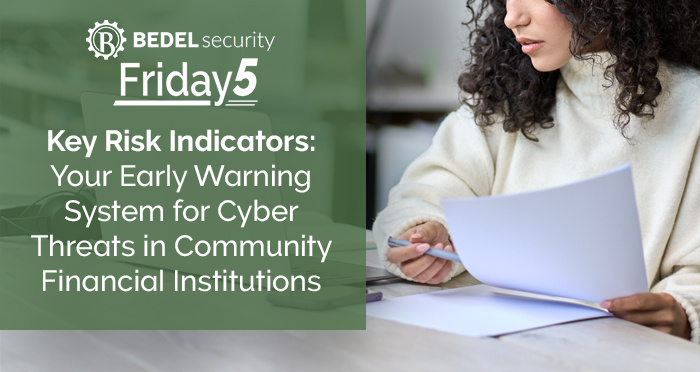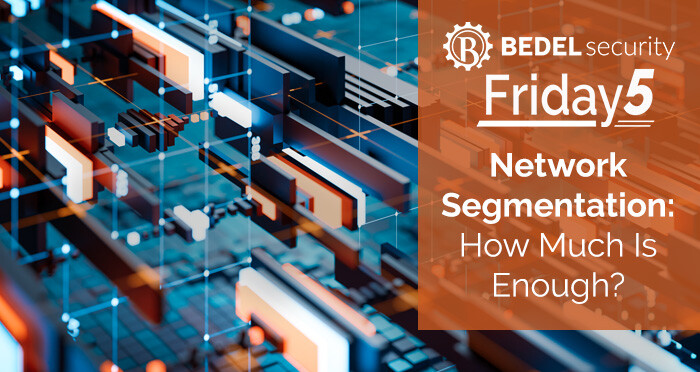1 min read
Why the FFIEC CAT Isn’t Your Risk Assessment—And What To Do Instead
With the upcoming sunset of the FFIEC Cybersecurity Assessment Tool (CAT) in less than three months, community banks are beginning to get nervous...
3 min read
Trisha Durkin : Oct 11, 2024


In the financial world, predicting risk is like forecasting the weather—you need to know the signs of a brewing storm before it hits. For community financial institutions, this becomes even more critical. With limited resources compared to larger banks, anticipating threats and responding promptly can make all the difference. This is where Key Risk Indicators (KRIs) come into play, acting as your early warning system to help you stay ahead of cybersecurity threats, regulatory risks, and operational disruptions.
Let’s explore what KRIs are, why they matter, and how your institution can leverage them to strengthen your risk management strategy.
Key Risk Indicators are metrics used to signal potential risk exposures that could impact your institution's goals or operations. Think of them as the “smoke detector” for risk—they don’t stop the fire, but they alert you to the danger early enough to take action.
KRIs help monitor potential vulnerabilities like:
By tracking these indicators, you can get a clearer picture of where your institution is most vulnerable and take steps to mitigate those risks before they escalate into costly issues.
Community financial institutions often operate with tighter budgets, fewer staff, and less sophisticated systems than their larger counterparts. This makes having a strong risk management framework even more crucial. Here’s why KRIs should be a cornerstone of that framework:
KRIs give you the chance to act before a risk fully materializes. Instead of reacting to a data breach after it happens, monitoring a KRI like "the number of unauthorized access attempts" can help you tighten security protocols before the breach occurs.
With limited resources, community financial institutions must be strategic in how they invest in security and risk mitigation. KRIs help identify where your biggest vulnerabilities lie, allowing you to allocate your cybersecurity budget, staff time, and technology investments more effectively.
Regulators are increasingly scrutinizing how financial institutions manage risks, particularly cybersecurity threats. By actively tracking KRIs, you not only improve your institution’s security posture but also have the data to demonstrate compliance during audits.
Clear, quantifiable KRIs provide decision-makers with a better understanding of the risk landscape. Whether you’re considering new technology investments, expanding services, or merging with another institution, KRIs offer valuable insights that can guide strategic decisions.
To get the most out of your KRIs, it’s not just about collecting data—you need to ensure it’s actionable. Here’s how:
Not all risks are created equal. Focus on KRIs that are most relevant to your institution's unique risk profile. For example, if you’re a community bank heavily reliant on digital services, your KRIs should include metrics like failed login attempts, website downtimes, or suspicious transactions.
Wherever possible, automate the collection and monitoring of KRIs. This reduces the burden on your staff and ensures data is up-to-date. Many financial institutions already use tools like Security Information and Event Management (SIEM) systems to automatically track cybersecurity-related metrics.
A KRI is only useful if it tells you when to take action. Set clear thresholds that, when exceeded, trigger a response. For instance, if the number of phishing emails targeting your employees spikes by 20% in a month, that should prompt an immediate review of your email security protocols.
The risk landscape is always changing, especially in the world of cybersecurity. Regularly review your KRIs to ensure they remain relevant. As new threats emerge—like AI-driven attacks or new regulatory requirements—your KRIs should evolve to keep pace.
For community financial institutions, being prepared for risks, especially in the cybersecurity space, is essential for survival and growth. KRIs are more than just data points—they are your early warning system, allowing you to anticipate and manage threats before they become major incidents. By choosing the right indicators, automating tracking, and responding to thresholds, your institution can stay one step ahead of emerging risks while making informed, proactive decisions.
Incorporating a strong KRI framework isn’t just about managing risk—it’s about building resilience, trust, and a stronger future for your institution.
Bedel Security assists financial institutions across the country with managing and strengthening their Information Security program. If you have questions or would like to learn more about what we do, please contact us at support@bedelsecurity.com to start a conversation.

1 min read
With the upcoming sunset of the FFIEC Cybersecurity Assessment Tool (CAT) in less than three months, community banks are beginning to get nervous...

Network segmentation is one of those terms that gets thrown around a lot, like the principle of least privilege and role-based access, as if it was...

Building a Risk-Based Information Security Program for Community Banks For many community banks, passing a regulatory exam can feel like a victory...